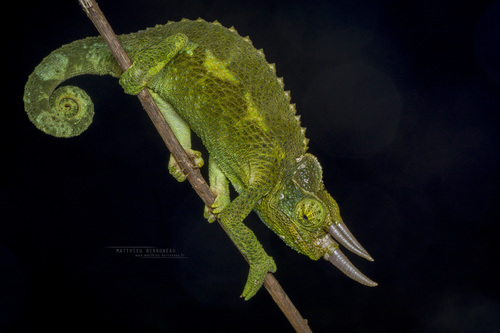
Jackson's Chameleon
Jackson's chameleon, with its distinctive three horns and vibrant green hue, is a master of camouflage in East Africa's forests. Males sport Triceratops-like horns, adding to their prehistoric allure. These adept insect hunters are vital for balancing local ecosystems, showcasing remarkable adaptability and color-changing prowess.
5-10 years
Lifespan
90.0 - 150.0 g
Weight
Length: 23 - 33 cm
Size
Yellow, Blue, Green
Color
5 months
Age of Sexual Maturity
Least Concern
Conservation Status
Stable
Population Trend
Characteristics
Trioceros jacksonii, commonly known as Jackson's chameleon, is native to the mountainous regions of East Africa. It features striking three-horned heads in males, resembling miniature Triceratops. These chameleons are arboreal, displaying vibrant green colors that change based on mood and environmental factors. They play a crucial role in controlling insect populations in their ecosystem.
Distribution Range of the Jackson's Chameleon
Trioceros jacksonii, commonly known as Jackson's Chameleon, is native to East Africa. Its primary geographical distribution includes the mountainous regions of Kenya and Tanzania.
Jackson's Chameleon's Habitat
Environmental Conditions
Jackson's Chameleons inhabit montane forests and woodlands. These regions are characterized by a subtropical to tropical climate, with relatively high humidity and moderate temperatures. The elevation ranges from approximately 1,600 to 2,500 meters above sea level, providing a cooler environment compared to the lowlands.
Ecological Niche
Jackson's Chameleons are arboreal, primarily living in trees and shrubs where they can find insects, their primary food source. They are well-adapted to life in the forest canopy and are known for their ability to change color for camouflage and communication. The chameleon's horns, which are more pronounced in males, may play a role in mating displays and territorial disputes.
Copyright @ Nature Style Limited. All Rights Reserved.
 English
English